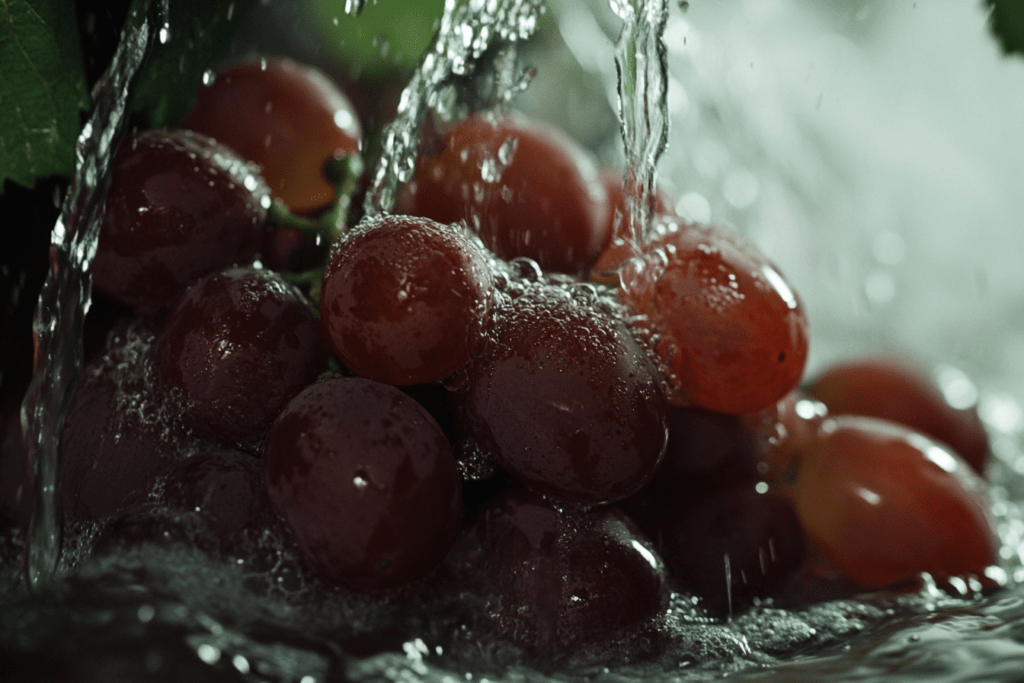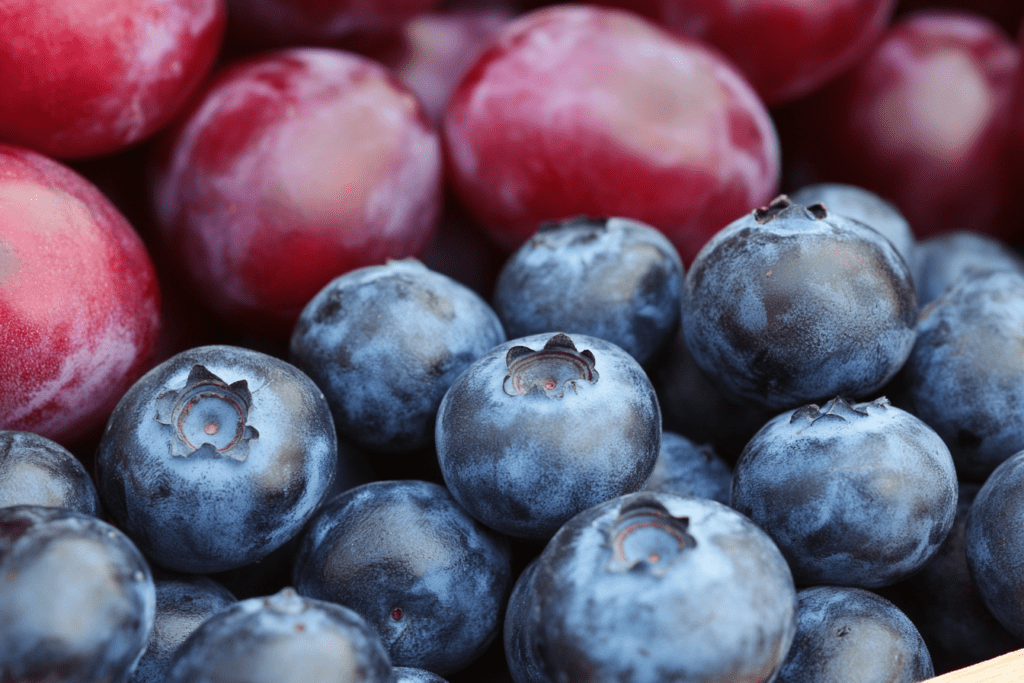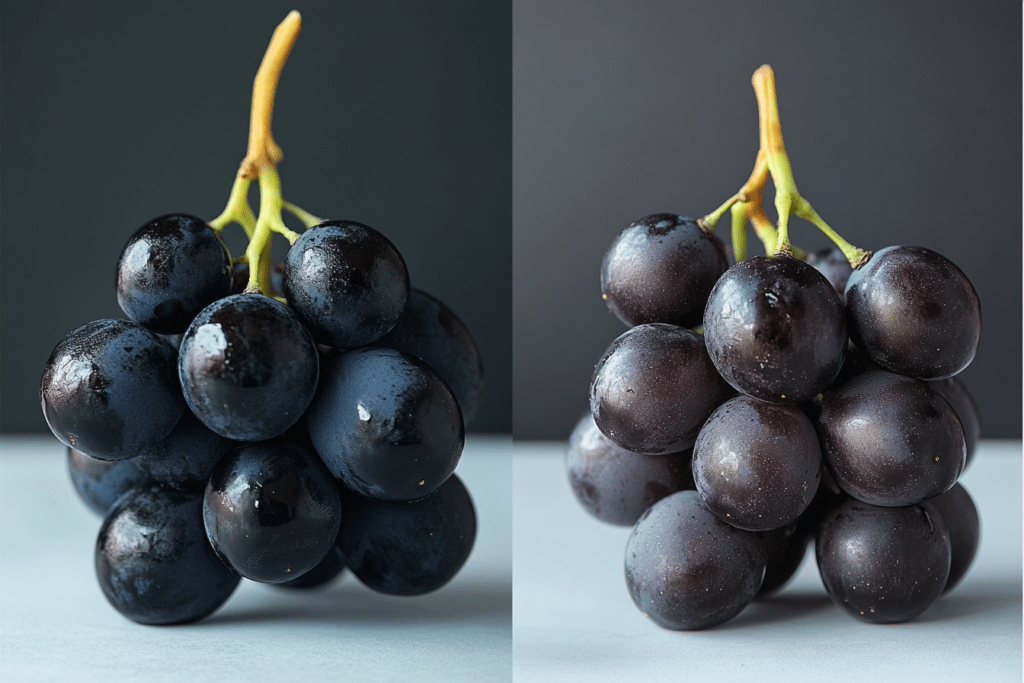Ever noticed that powdery white coating on your grapes and wondered if you should wash it off? You’re not alone. While many people mistake this substance for pesticides or mold, the truth is surprisingly different. Let’s clear up the confusion about this mysterious white powder and why you might actually want to keep it around.
That white coating is a natural protector
Many people assume that the white powdery substance on grapes is leftover pesticide residue. This misconception leads to unnecessary worry and excessive washing.
In reality, that white coating is called bloom, a natural waxy layer produced by the grape itself. Bloom acts as a protective barrier, helping to prevent moisture loss and shielding the fruit from pathogens.
The presence of bloom indicates freshness, not contamination. It’s a sign that the grapes have been minimally handled and are at their peak.
Stop scrubbing your grapes too hard

Overwashing grapes can strip away this protective bloom. While it’s important to rinse fruits before eating, excessive scrubbing isn’t necessary and may reduce shelf life.
Bloom helps the grapes retain moisture. Removing it hastens dehydration, leading to shriveled, less appetizing fruit. A gentle rinse under cool water is sufficient to clean your grapes without damaging their natural coating.
How to tell bloom from harmful mold
It’s easy to mistake bloom for mold, but they are quite different. Bloom is a uniform, thin layer, whereas mold appears as fuzzy spots or patches.
Mold often has a distinct odor and can vary in color from white to green or black. If you see such signs, it’s best to discard the affected grapes. Understanding the difference ensures you don’t throw away perfectly good fruit unnecessarily.
Other fruits have this coating too

Grapes aren’t the only fruits with bloom. Blueberries, plums, and even some apples have this natural coating.
Noticing bloom on other fruits can also indicate freshness and minimal handling. It’s a sign that the fruit has been carefully picked and transported.
Next time you’re at the market, look for the subtle bloom on your favorite fruits—it might just enhance your appreciation for nature’s design.
Don’t throw away perfectly good grapes
Some people throw away grapes thinking the white film indicates spoilage or contamination.
In doing so, they miss out on perfectly good fruit. Remember, bloom is harmless and even beneficial. By understanding what bloom is, you can reduce waste and enjoy your grapes with confidence.
Why shiny grapes aren’t always better

Shiny grapes might look appealing, but they may have been over-handled or even coated with substances to enhance appearance.
Natural bloom gives grapes a matte finish. A lack of bloom could indicate that the grapes are older or have been heavily processed. Choosing grapes with bloom can be a better indicator of freshness and quality.
The secret role bloom plays in wine
Bloom isn’t just cosmetic; it plays a crucial role in winemaking. The yeast present in the bloom is essential for fermentation.
Winemakers often rely on the natural yeast from bloom to ferment grape juice into wine, adding unique flavors and characteristics. Understanding this can give you a deeper appreciation for how your favorite wines are crafted.
Keep your grapes fresh for longer
Improper storage can shorten the shelf life of grapes. Keeping them dry and cool helps maintain the bloom and prolong freshness. Avoid washing grapes before storing; moisture can promote mold growth.
Store grapes in a breathable bag or container to allow air circulation while protecting them from moisture.
Nature’s own preservation system works
Bloom is a remarkable natural defense that fruits have developed over time. It serves multiple purposes, from moisture retention to pathogen defense.
By appreciating bloom, we can better understand and respect the natural processes that keep our food fresh. Next time you see that white coating, remember it’s there to benefit both the fruit and you.
So, the next time you spot that white powder on your grapes, you can enjoy them without hesitation. Far from being something to fear, it’s a natural and beneficial part of the fruit’s life cycle.


